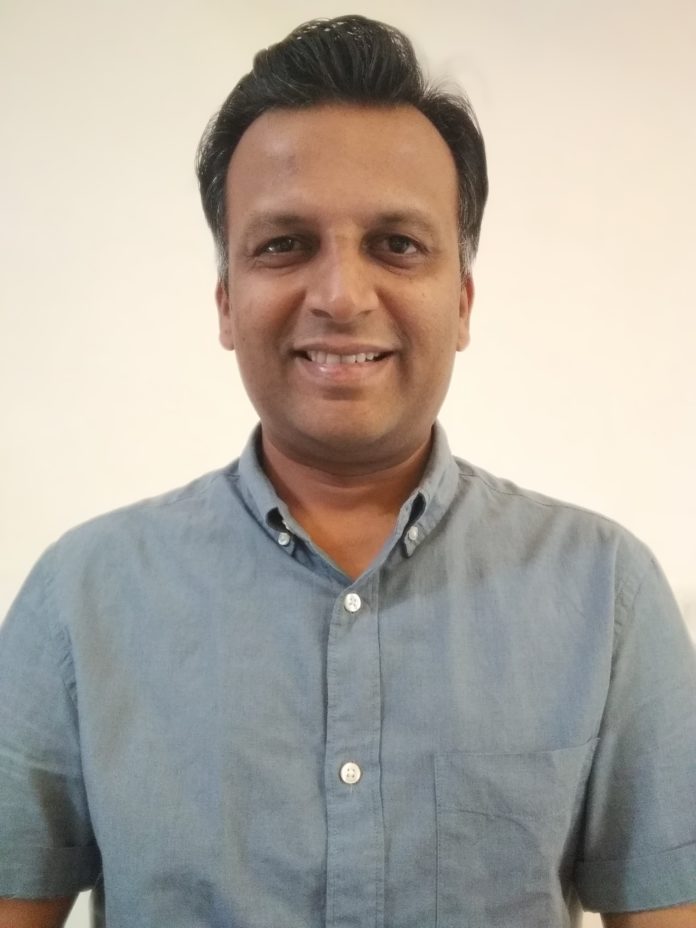With every passing day, we realise how strong the intersection is between the Internet of Things (IoT) and Artificial Intelligence (AI). As IoT devices will generate vast amount of data, AI will be functionally necessary to deal with these huge volumes if we’re to have any chance of making sense of the data. Amit Mate, founder of GMAC Intelligence LLP in an interaction with Baishakhi Dutta of the Electronicsforu.com Network shares his thoughts on how IoT and AI can be triggered in creating an extraordinary change.

Q) Many opine that IoT is just a buzzword that industry Gurus have coined to create hype? Do you agree with that line of thought?
IoT started off as a catch-all phrase to emphasize the connectivity component, especially in electronic, electrical or mechanical appliances. It is not a hype! Consider the proliferation of Alexa devices in India in the past 18 months or sales of connected TVs or connected rental scooters during the same period.
As you can see, IoT devices that have a significant AI component are the ones that the consumer product market is liking. Now with LORA, Sigfox and NB-IoT, we should see an even greater uptake of IoT under the smart-city or industry 4.0 umbrella in the coming years.
Q) In your opinion, is the Government of India (GoI) playing any significant role in expanding the IoT market right now? If yes–how?
I believe the government’s role should be that of a facilitator or enabler. It is already doing its part in terms of making data and data-services available to people all over India at an affordable price.
Today the market price of a GB of data has fallen to $0.26 /INR 18, which is the lowest in the world. The government has also allowed use of LORA and Sigfox in unlicensed bands thereby facilitating development of even lower cost IoT devices.
Q) What are your expectations from the GoI in terms of the initiatives they should take to make India an IoT-super power?
They should keep encouraging/regulating the operators on improving speed, capacity and coverage of connectivity e.g., licensing 5G in urban areas, LORA, Sigfox in industrial/smart-city arenas, and enabling OneWeb based backhaul connectivity in remote areas.
I believe the next phase of expansion in the IoT market will come from AI enabled devices and services. The government can do a few things here such as educating the market about AI by deploying AI enabled IoT solutions in government departments and showcasing them. They should encourage use of AI enabled IoT devices in Defense giving local players a chance to become world class AI companies.
Q) Are local players strong enough to foray into the defense space?
Today we have a critical mass of requisite engineering experience in India. Many of these are experts from the US who have come back to India with 15+ years of core technology development experience in areas such as wireless technology, chipset design and reliable real-time software.
We have a base of hugely talented hardworking engineers as well. As we combine this experience and talent with the right kind of capital and ideas, great things happen. A lot of MNCs are already tapping this talent/experience pool to develop core technologies such as Neuromorphic-ASICs, 5G, OneWeb and AR/MR from their Bangalore, Pune or New Delhi centers.
Given the right investment and corporate culture/structure, it is possible for the same pool to deliver E2E core technologies for Defense-IoT as well.
Q) Are you satisfied at the rate of deployment of IoT solutions in India?
I have just begun my journey in the IoT market. I think the market is ripe for a significant uptick. The local IoT device vendors can be bolder and invest in building innovative new devices instead of only me-too solutions.
IoT device vendors can leverage their understanding of the market and customers and get help from companies like GMAC Intelligence to build these new products.
Q) How do you see the IoT market evolving in the next 2-3 years?
IoT devices that are already prevalent in the market will evolve to incorporate significant AI components to stay relevant. We should see more uptake of devices like, AI-watches, AI-TV and AI-security-cameras.
The market is also ripe for new kind of IoT devices at the intersection of AI, 5G and low-power/high-performance ARM chips.
Q) Which industry segments do you believe will be driving a larger chunk of demand? Why?
Consumer electronic products (including robotics), Connected cars and vehicles and Security solutions for the home and enterprise, will be the primary drivers of demand. When consumer electronics devices, using Alexa skills, understand local languages such as Hindi, Marathi, Bengali or Kannada, naturally more people will find it useful.
The government and public push towards making vehicles safer and more accessible is driving the connectivity component in cars and vehicles. Growing urbanization, working women and nuclear families is fueling the need for security in homes and offices.
Q) What’s your bigger challenge–acquiring customers or acquiring talent? What’s your strategy in resolving the same?
It is like the chicken and egg problem. Having a talented team that believes in the vision and then working hard to acquire and keep the customers happy is a reasonable strategy.
I strongly believe that the best talent available in any given field should always be hired. Individuals who take immense pride in whatever they do and are ready to help other people should be hired. A chain is only as strong as the weakest link. A fair, trustworthy and engaged management is needed to sustain this talent.
Q) What is the estimated revenue of your biz that you’d attribute to IoT-related business?
The worldwide sales of ARM IoT chips will be close to 25B by 2025. We want to deploy our AI models on at least 10 per cent of these chips.
Q) How do you see your IoT-related business growing in the next 2-3 years in terms of the fraction of your overall revenues?
We expect IoT to be close to 100 per cent of our total business over the next three years.
Q) What’s your strategy to create a differentiation for your solutions vis-a-vis your competitors?
Our unique business and execution model allow IoT device vendors to quickly incorporate and integrate AI components in their existing software stack in a cost-effective manner.We design and train the AI models under embedded platform constraints. We convert the models to real time software that can easily work on customer’s hardware.
Designing and training deep neural network models requires time and significant investment in talent and hardware, which the customer does not need to worry about, if they license from us. We will also provide additional software support and regular upgrades of AI models to ensure state-of-the art performance.
Q) Have you come across any successful deployment of IoT in India that’s worthy of being noticed by other decision makers?
IoT consumer market is loving devices such as Kindle, smart-watches, Alexa and home-security cameras. We should see more of these devices become easier to use, especially with the support of vernacular languages and other AI components.
Q) How would you describe your solutions to a non-technical decision-maker at the clients’ end?
We typically carry demo apps on smartphones and show them to our customers, “show and tell” is a very effective way of explaining things. When people see applications running on a “smartphone in offline mode” that can recognize their voice commands or count the number of people in a camera frame, they immediately can relate to what is possible with on-device AI.
Q) What’s unique about your solution or your firm for them to opt for it–vis-a-vis competitors?
Our offering is globally unique. We think of AI layer as another software layer in the stack and we are in the business of licensing that software.
Our ready-to-deploy AI models in vision, speech, video and text can enable IoT players to add SKUs to their products with ease. e.g., a gate security camera with automatic number plate recognition becomes an automatic gate opener.
Office security cameras with fire detection become fire alarms – just with some software changes. In fact, we encourage the IoT device vendors to send us queries on our website with their requirements and we will get back to them with solutions and software.









